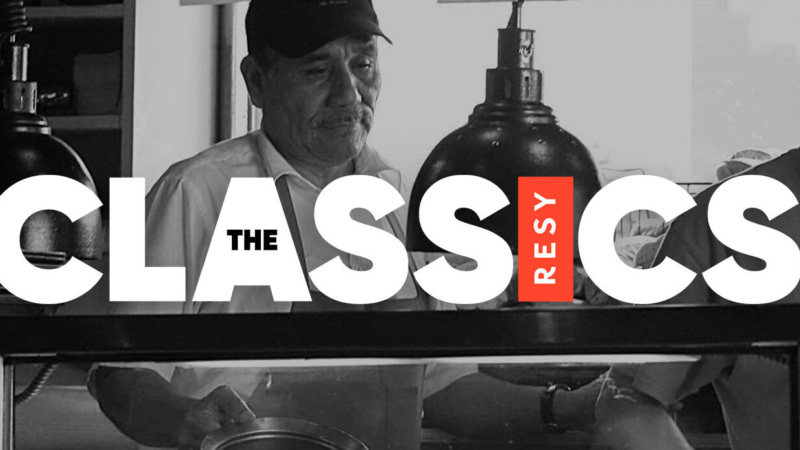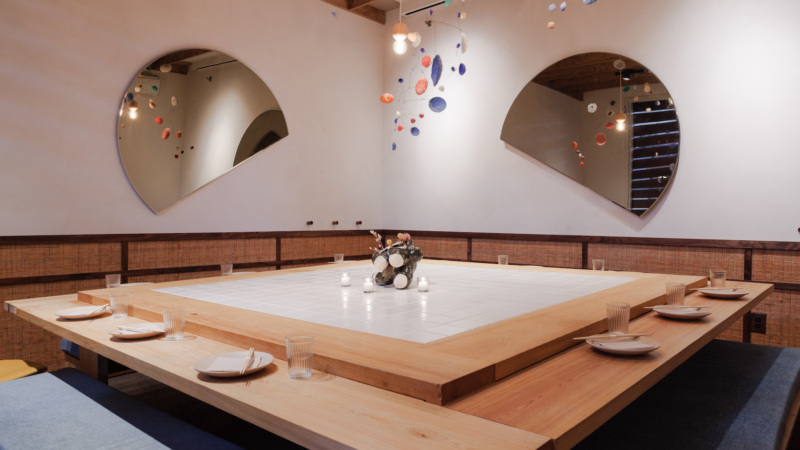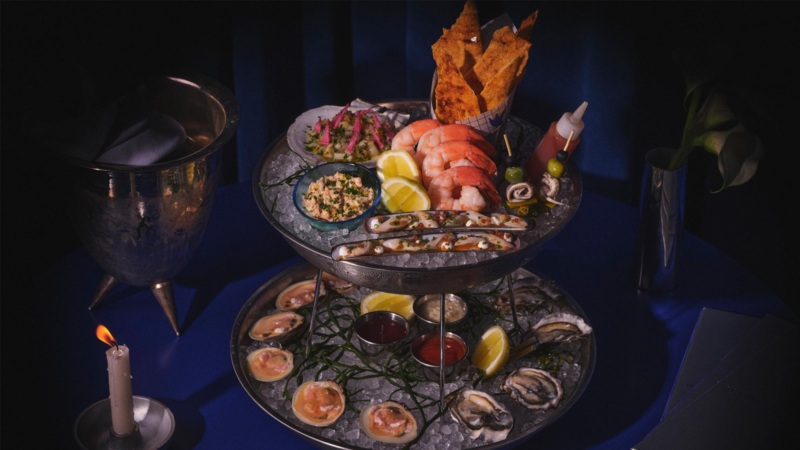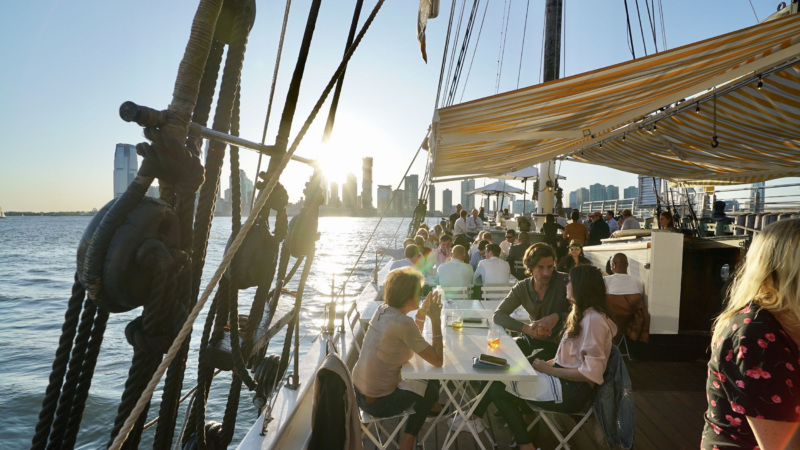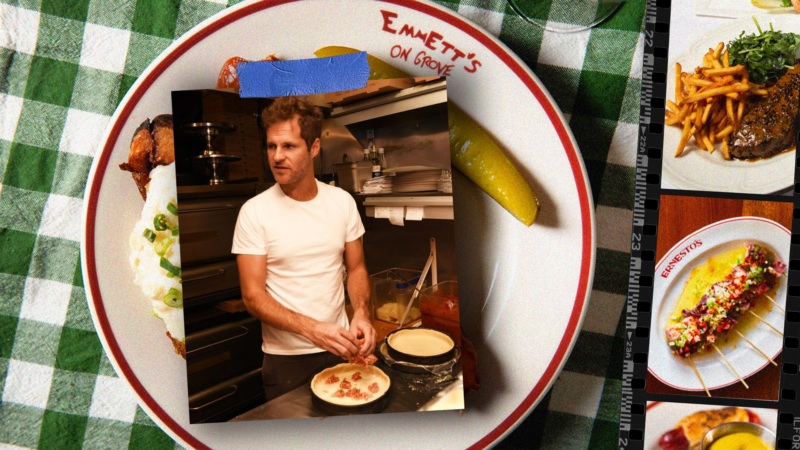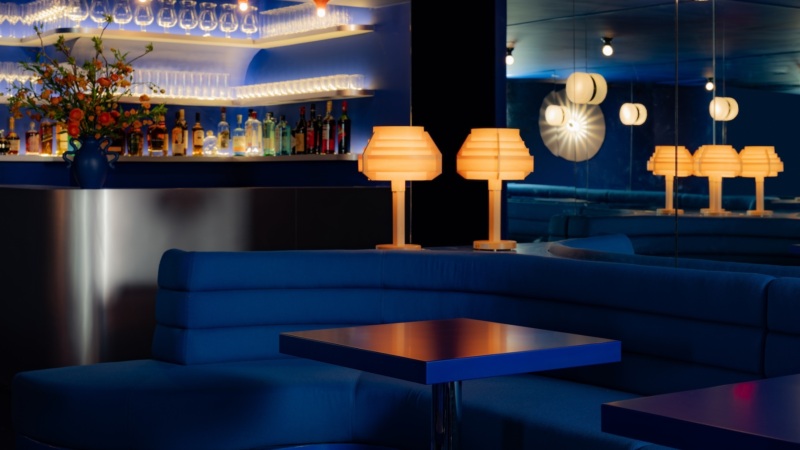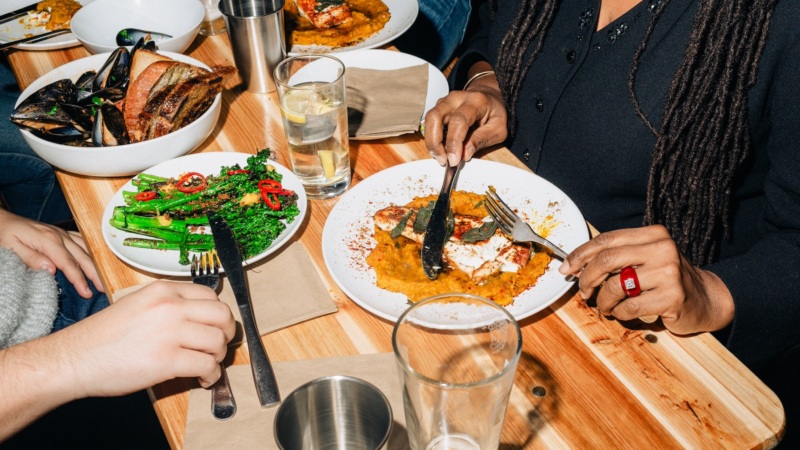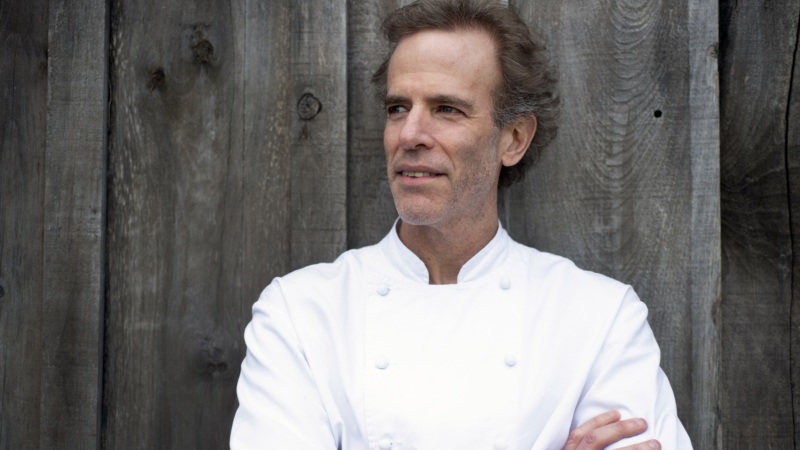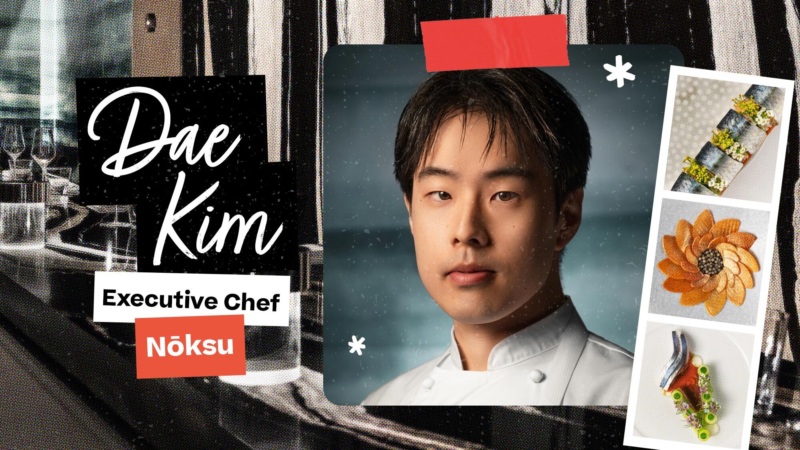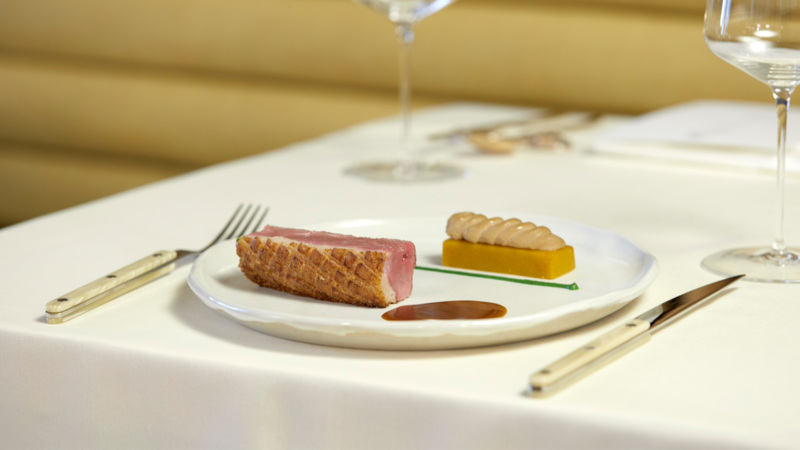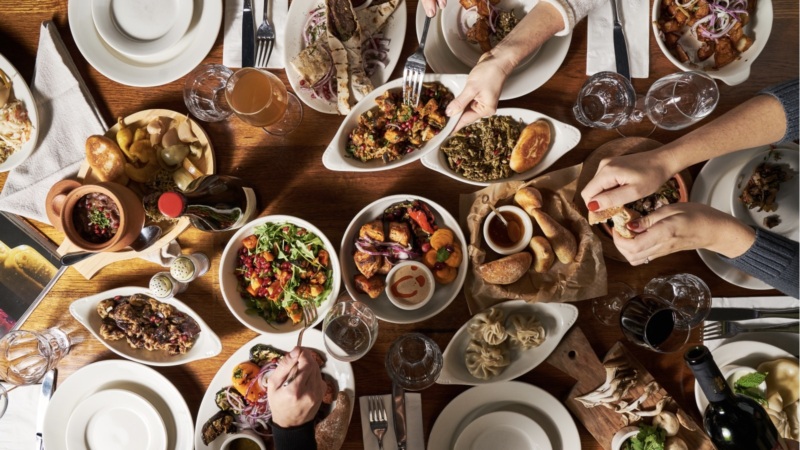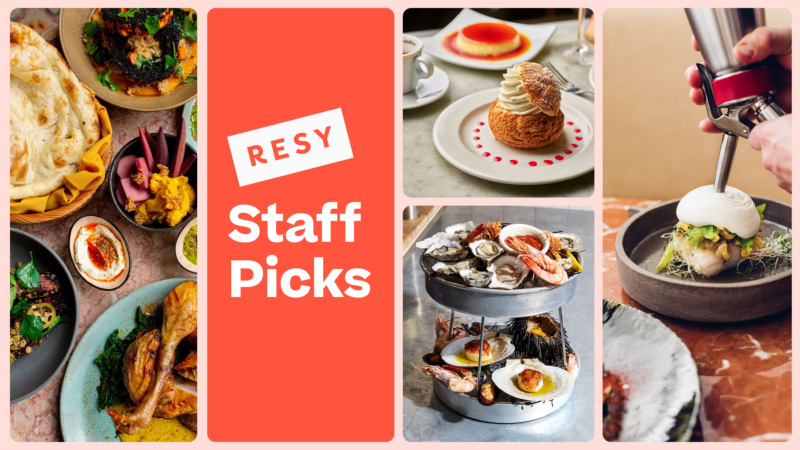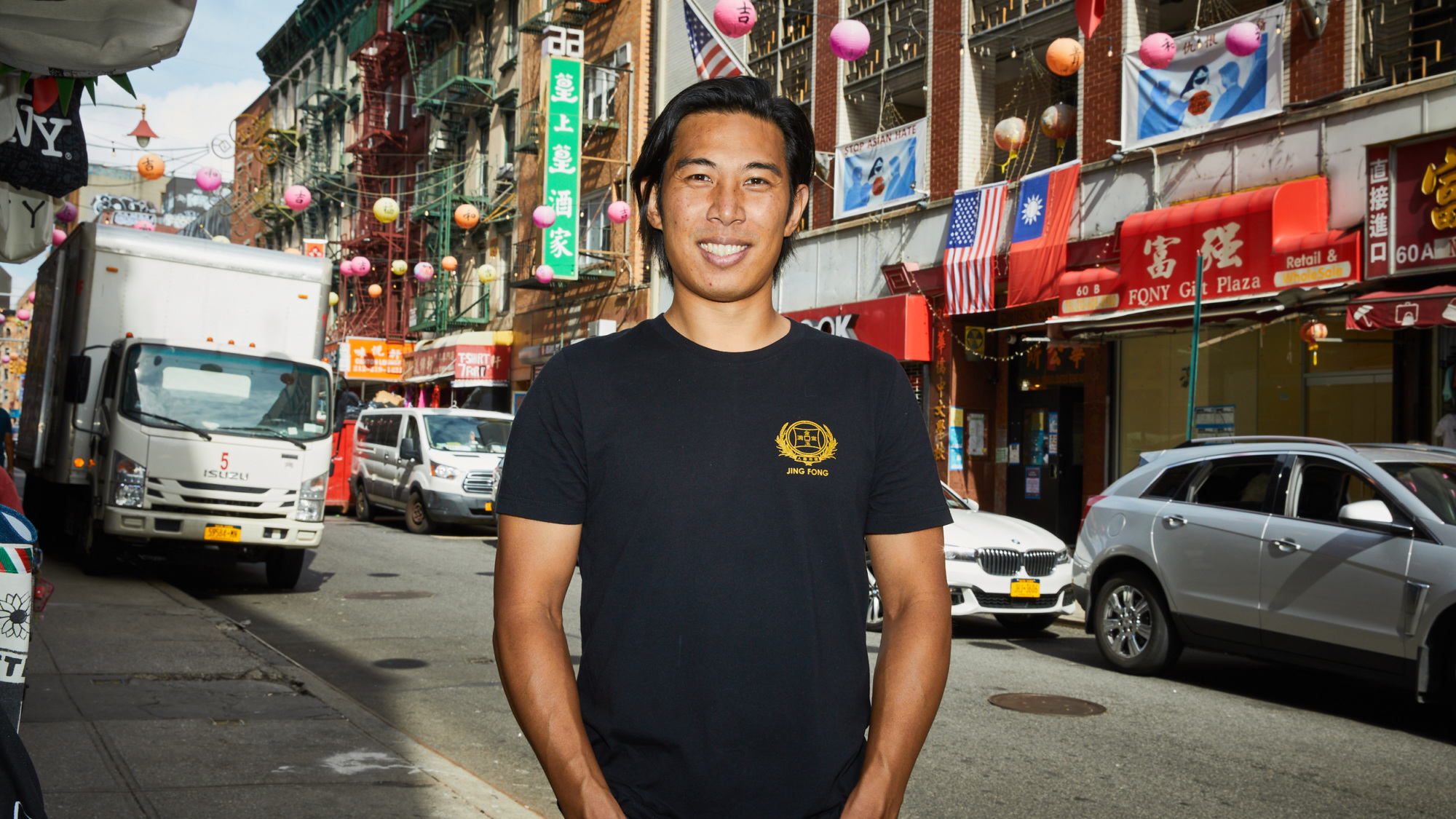
The Family Restaurant That’s Become New York’s Melting Pot for Nearly 50 Years
This March, one of New York City’s most beloved dim sum palaces closed its doors and the city lost a shared piece of its culinary history.
Jing Fong, the Manhattan Chinatown stalwart that had occupied a 25,000 square-foot space at 24 Elizabeth Street for 28 years (and 15 years before that in a space just down the block) was a beloved institution among New Yorkers and tourists alike who loved setting foot onto its steep, three-story-tall escalators and eventually finding themselves in its massive, crimson-colored banquet hall that could hold up to 800 diners. There, they were surrounded by staffers explaining the daily dim sum offerings in Cantonese, pushing around carts filled to the brim with har gow, siu mai, and phoenix claws. Or they might find themselves right in the middle of multiple banquet parties — celebrations for weddings, graduations, birthdays, retirements, and Chinese family associations.
Luckily for us, although Jing Fong closed the doors to its Elizabeth Street home (pictured below), they’re planning to reopen this October in a new, smaller location on Centre Street, that can host up to 125. We spoke with third-generation owner Truman Lam about the move, and about the challenges of relocating a legendary restaurant like Jing Fong.
Resy: Were you surprised by how emotional people were about the closing of Jing Fong’s 20 Elizabeth Street location?
Truman Lam: I was definitely a little bit surprised. I knew that it meant a lot to the local Chinese people and the Chinese community. But I didn’t realize how many non-Chinese customers we’ve had who have been regulars more than 20 years.
During the last few days we were open, I was walking around and talking to people who came in to walk around and take pictures, and I didn’t realize how many people have been coming to us weekly for so long. One family said, “Oh, this is my son. He’s 13 years old now and I remember coming here before he was born, while I was pregnant, and, you know, after baseball practice, every Sunday, we’d bring him every weekend.” There were so many stories like that.
I’m glad that people got one last chance to go there, even though the service wasn’t the same [because of the pandemic]. Everything was a little bit different from normal, but at least we got one last chance to go up that escalator.
We have this family friend who’s in restaurant marketing and she’d always say to us, “I don’t think you understand how big Jing Fong is to people.” It wasn’t anything different for us. It was always just, you know, a family restaurant.
What are some of your personal memories of Jing Fong? You pretty much grew up in the restaurant over the years.
I actually have some memories from the very first location, on 24 Elizabeth Street, before we moved to 20 Elizabeth Street. My grandparents babysat me on a daily basis for a little bit when I was really young, and my grandfather would take me out to the restaurant pretty much every day with my grandmother. I remember going to the old restaurant, in the office and crawling around or drawing. Some of our employees who have been with us from way back when, like our bookkeeper — she’s been with us for probably more than 30-plus years — they tell me they remember me when I was a little kid, following my grandfather all over the place.
I remember my uncle getting married at the new place on 20 Elizabeth Street in the early 90s. They bought out the whole restaurant. It was an 800-person wedding. My sister was the flower girl. And the crazy thing is that the last big event that my family did at Jing Fong was when my sister got married in 2017. She actually bought out the restaurant on a Saturday, and hosted this wedding for 300 people. She transformed it so much with the lighting, and by adding a bar and a dance floor, and treating the ceilings, that when my aunt came up the escalator, she said, “Holy crap, I don’t remember this place.” At one point, that same aunt who’s been eating here for more than 30 years asked me, “Where’s the bathroom?” It just goes to show you how long we’ve been there.

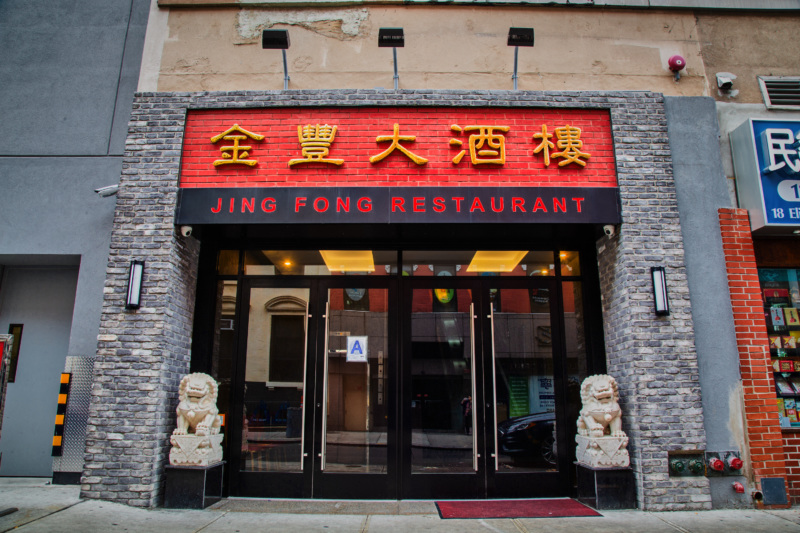
Whenever I think of Chinese banquet culture here in New York, I think of Jing Fong. Can you tell me a little bit about Jing Fong’s history as a banquet venue?
When the mass immigration of Chinese people to America happened in the 1970s, I think a lot of them moved to New York, and we were one of the few options that people had when they wanted to get married and have a more traditional Chinese wedding. There just weren’t a lot of options back then.
Over the years, we became this place that was one of the first, and we were also the largest dining hall. We had the biggest escalator and everything about the space was just so grand. I think the opulence was kind of why people gravitated toward us in the beginning. And then over the years, as with any restaurant, there’s wear and tear and we’ve refreshed the space a few times already. But you know, the infrastructure is meant to be like a brand-new restaurant that some of these other restaurants in Flushing and Brooklyn have built. In general, I think Manhattan has also become too expensive to live in, so a lot of new immigrants don’t even bother coming out to Manhattan anymore; they just move straight to Flushing, or they move straight to Brooklyn.
The Chinese regional associations are based here in Manhattan, and those organizations will always try to have their annual dinners, charity fundraisers, everything, in Chinatown. And we were the spot for them because nowhere else could fit 800 people; they were huge parties. They would celebrate Lunar New Year or celebrate their annual gala, or whatever the occasion may be. And Jing Fong became one huge meeting point. There were years where our restaurant wasn’t even big enough. And some of these organizations would go to six different restaurants on the same day and it would be a gathering for 3,000 people.
That culture is not around as much anymore; it’s shrunk a lot. We used to be able to do three or four weddings at a time at Jing Fong. And it was just really loud. Personally, I didn’t really care for it, because sometimes it was too loud and a little bit over the top but in Chinese culture, it’s a way to celebrate, and we embrace it.
Why do you think those kinds of massive banquets aren’t as prevalent anymore?
I think there are just more restaurants to choose from now. And immigration patterns have led Chinese people to move to more affordable areas. And I think people could argue now that even Brooklyn and Flushing are becoming unaffordable and expensive. A lot of American Born Chinese, myself included, don’t like to do the traditional Chinese wedding. It’s usually more of the older generation, like my parents or my grandparents, who want that kind of style of party.
The new space is almost the same size as the very first location of Jing Fong on 24 Elizabeth Street. Do you sort of feel like Jing Fong is coming full circle with this new space?
I think it might actually be a little bit smaller than the original space, but then again, what I recall from memory of the original space was when I was five or six years old, so maybe it felt bigger back then.
Either way, you’re right; this is going to be more similar to the original space and hopefully more sustainable. At 20 Elizabeth Street, we were one of a kind; we could host 800 people at a time, and we had one of the most lively, energetic environments for dim sum service. And then at night, we would transform into this space for banquets, charity fundraisers, local associations, weddings, birthday parties, corporate holiday parties, whatever; you name it, we’ve done it there.
We didn’t think that kind of volume business, the banquets and events, were coming back for at least a year or two, and our lease would have expired by that time. So, it didn’t make sense for us to continue there. We weren’t in a position to negotiate a long-term lease there. And even if you were to try to negotiate a long-term lease there, you’d have to be pretty confident that everything goes back to normal.
I think it would have been very difficult, and, and even prior to COVID, we noticed that a lot of the Chinese weddings and association banquets were moving and dispersing more towards Brooklyn Chinatown and Flushing’s Chinatown. So, in a way, Chinatown itself was already shrinking.
We still have a strong foothold in all those events because we’ve been there for so long, and we’ve had a lot of goodwill with a lot of these associations. But you could see that Chinatown as a whole was becoming less and less competitive.
We think this new space is going to be potentially more sustainable because it has a much smaller footprint. Our operational costs should be lower. We’re obviously running it with a smaller staff, unfortunately.
We have a lot of customers who have been dining with us for many years, and I think a lot of them have told us they want to go to the new space. That’s why it was important for us to stay in Chinatown and to try to be as similar as possible to what we used to be. We’re hoping we’ll still get some events, but we’re not going to be overly reliant on events.
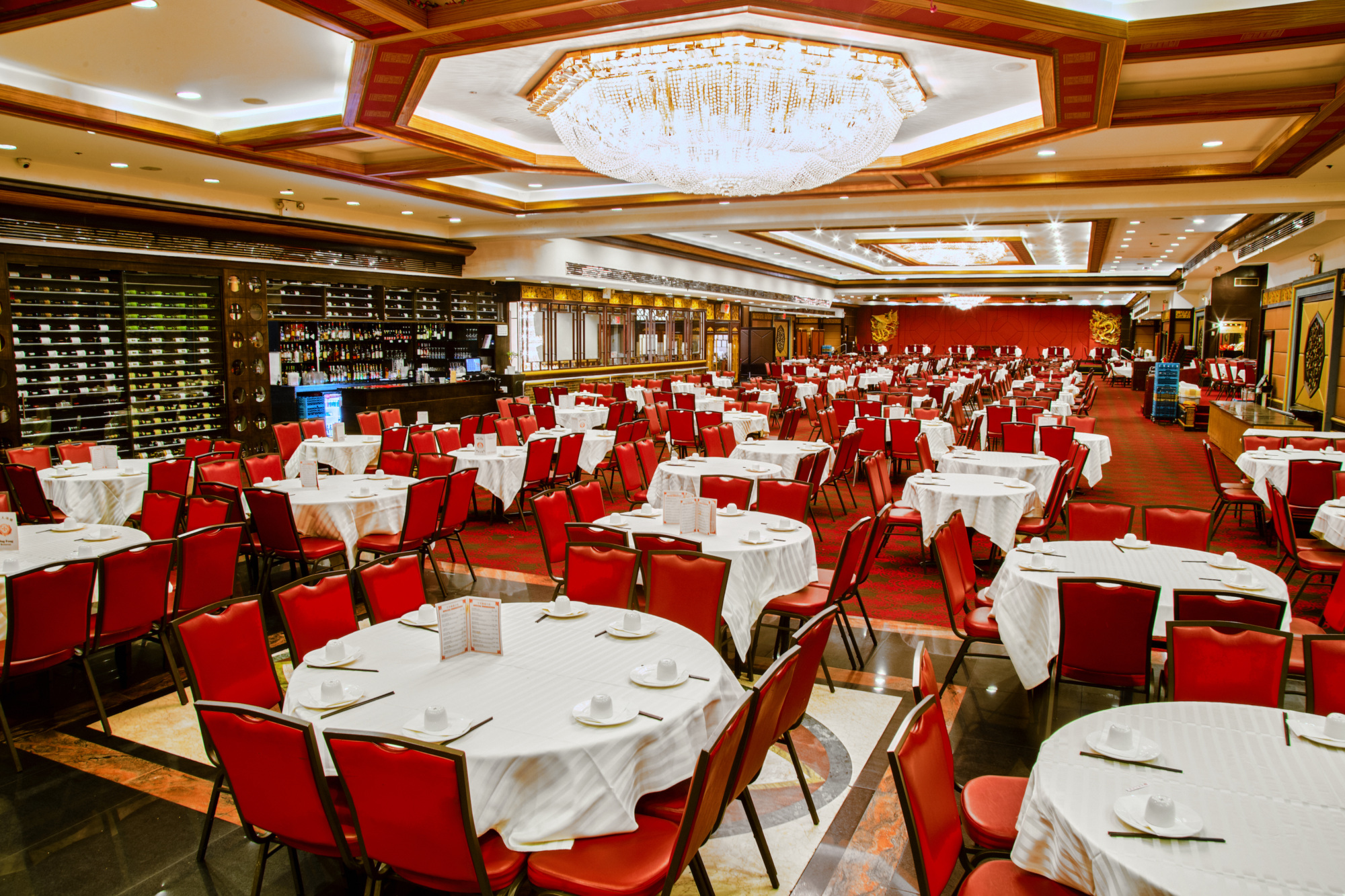

How did you find this new space, and how did you decide this would be the new home of Jing Fong?
In the spring, we realized that we were going to be moving and getting out of that old space because we thought that the business was not going to be sustainable. We started looking around, and we knew that we wanted to stay in Chinatown, or at least as close to Chinatown as possible. And I think the new space that we chose is, is pretty much on the border and still within the Chinatown limits.
We looked at so many spaces over the course of two months. The ideal size for us was probably something like 300 or 400 seats, max. There aren’t many large spaces available in Chinatown, and I think that the one that we found is already one of the larger spaces. There are a lot of smaller spaces in Chinatown and they were all too small or the setup wasn’t right; the dining room was going to be small, or the kitchens were just tiny, little shacks. And it just wasn’t a good fit for us.
We settled on this space because it was one of the largest spaces that we found and it used to be an existing restaurant [Red Egg] in the past. We thought it would make construction and renovation and retrofitting easier. And the kitchen space was much larger compared to the other restaurant spaces that we saw. We would have wished to be more central in Chinatown, but just the sheer availability of what’s available right now is limited.
How has the move to the new location been going?
It’s been a little bit crazy. When you move out of a 25,000-square-foot space, there’s just a lot of stuff. More stuff than I even realized. We found stuff in some nooks and crannies that we didn’t even realize we had inventory of: Some plates that were shoved away in a corner somewhere that we didn’t know about. Steamer baskets. Maintenance supplies.
We used to have 130 or 140 people working for us, and everyone had their own little cubby, and some of them left their things behind. When we first closed down because of the pandemic, everyone thought, OK, it’s going to be a couple weeks or maybe a month. It’s hard to believe, but some people never came back. It’s been a year and a half, and it’s not normal yet. And we had to give up that space.
We’re still figuring it out. We’re moving to a 5,000-square-foot space, so we’re losing a lot of space and trying to decide what to keep what not to keep.
What are you bringing with you to the new space, from the old space?
Just whatever we can reuse: cooking equipment, utensils, dishware, some of our leftover supplies, like dry goods, and other stuff that doesn’t go bad.
We did keep some stuff like a vase that we’ve had for 20, 30 years that we bring out every year for Lunar New Year. We kept the two lions that were in the front of the store. We don’t know where we’re going to put it all. But we kept those just in case we want to use them.
Do you have any idea what’s going to happen to the old space at all? Has the landlord said anything?
I have no idea. I know that they’re doing construction there right now. I think it’s been boarded up. But they haven’t given me any kind of information as far as what they’re doing with it.
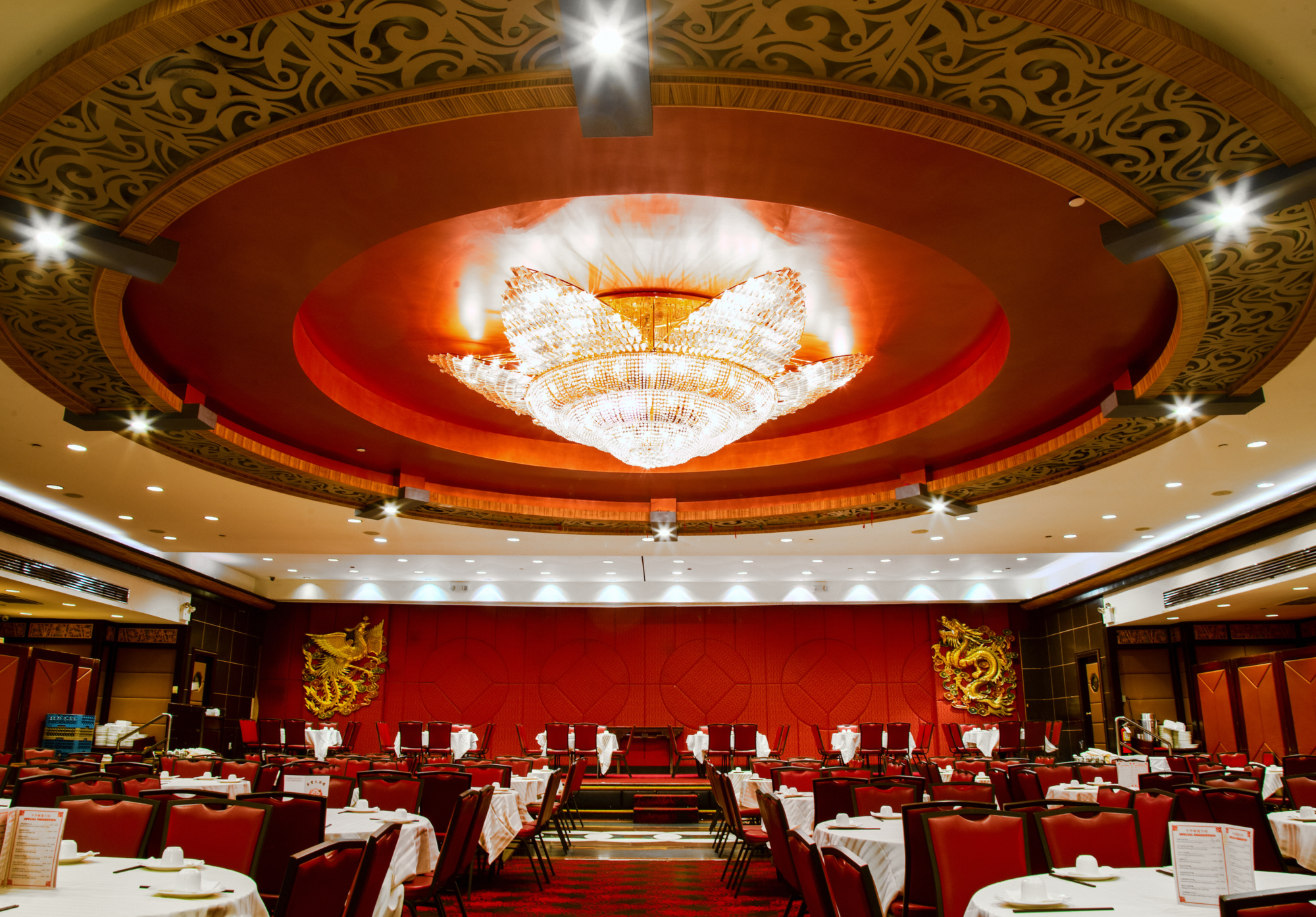
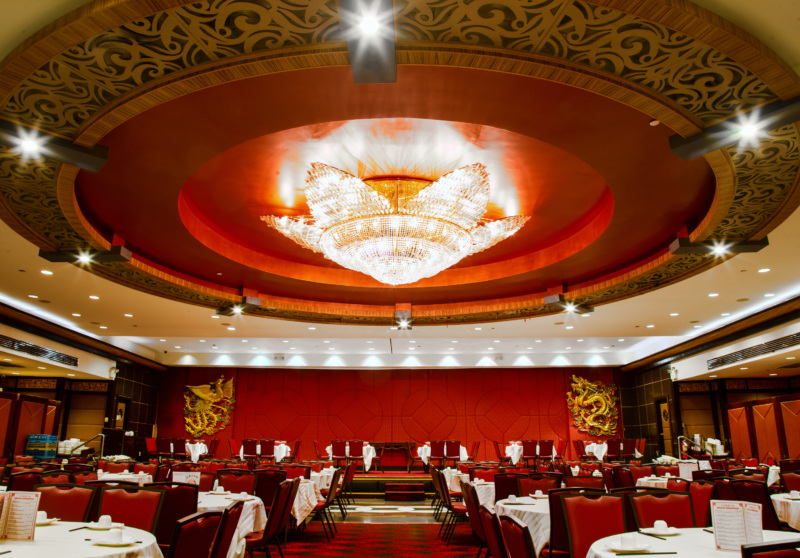
What do you think Jing Fong’s legacy is and how do you retain its essence, no matter where the restaurant is?
You can’t really replicate what Jing Fong used to be anymore; it would be too expensive to try to build something like that and to operate it.
To me, I think the essence of Jing Fong is that Sunday or Saturday brunch where people are waiting downstairs trying to get a ticket to get called to go up and have that dim sum lunch experience with the carts. One thing that we’re trying to bring back is the cart in the new space but, realistically, we’re not sure if that’s really doable, because it’s so much smaller. We’re thinking about how we could potentially do it, or at least as a representation of what we used to be with the carts.
The other part that’s the essence of Jing Fong is the people. The associations, the customers who were coming to us every day for 30 years. We had ABCs (American Born Chinese), like you and me. We had tourists. We had non-Chinese people from Manhattan or the local area coming because they’ve been coming with their families for however many years.
Jing Fong became this melting pot and somehow, even though it was a very traditional Chinese restaurant operation, we had this huge melding of different ethnicities and different parts of the world all coming together.
You could see it transform over the years; when I first started working here in 2010, I think it was still predominantly Chinese people who came here. And then over the years, it became more and more of a mix. You would still get your local Chinese people coming in every day, but you’d also get travelers from Europe, from Korea, Japan, just all over the place coming.
And the other component is our staff. I don’t know that there are that many restaurants that have as many staff as we did who have been with us for over 20 years. A large portion of our staff has been working with us for at least 15 to 20 years. There are a lot of familiar faces when you come in every time.
I think all those things together add up to make what Jing Fong was. And that’s why I don’t think that it can be replicated. But we’re going to try our best to try to bring the pieces that we can with us. And that means, you know, bringing our staff from the kitchen, the chef, and the front of house staff. We’re going to try to bring our managers with us if we can. From a staffing and a food perspective, a lot of things will hopefully be the same. And we’re hopeful that some of our longtime customers will come with us to the new spot, and that we’ll see new faces, too.
Do you feel like opening the Upper West Side location of Jing Fong in 2017 was good practice for how to open this new space and still keep the essence of Jing Fong?
On the Upper West Side, we were mostly concerned with simplifying things. We knew off the bat we wouldn’t be able to do carts there because it was way too small, and the kitchen wasn’t big enough for us to do banquets, so we did a more simplified menu. We also weren’t sure if our customer base was in that area. The premise was that we wanted to bring real authentic Chinese food to an area that didn’t really have it, something that was different from Americanized Chinese food. We’ve had our trials and tribulations up there, and I think we’re doing OK now, but it was definitely a learning experience to go through that.
What should people expect when the new space opens up?
We can still do banquets as long as it’s for less than 120 people. And one thing we couldn’t do in the old space was private rooms so with this new space, we can have a 10- or 15-person, or 30-person party to come in and have their own space. The wide-open space of the Elizabeth Street location made it unique, but we always had people asking us for private rooms but we couldn’t do it there.
We have a designer helping us with the look and feel of the new location, with the understanding that it’s not going to look the same as before, but we’re going to try to bring elements of it so that when someone comes in, we want them to feel like this looks familiar in a sense.
Do you feel like Chinatown is getting back on its feet these days following the pandemic?
I think it’s still struggling. I think if you go after in the daytime, there are moments where I just see it coming back. But once it goes past 6:30 or 7 p.m., the entire area is dead. There’s no traffic and it’s pretty empty. There are a lot of elderly people that live there, and they are still not really going out that much. Chinatown is heavily reliant on tourism. I think tourism is coming back a little bit, but I don’t know if it’s healthy to be fully reliant on tourism. We still need the office workers back. I think a lot about how Midtown is also being affected. I think fewer people are talking about Midtown than they are about Chinatown, but both these neighborhoods have the same problem.
What are your hopes for the future of Jing Fong, and for Chinatown?
I’m just hopeful that we can make this restaurant successful so that we have opportunities in the future to kind of rebuild, whether it’s another large space or one with smaller spaces, or even just to have a successful restaurant where our staff has a good standard of living and we can pay them a good wage.
I think it’s clear to everybody that over the years, it’s becoming more and more gentrified. There are obviously some benefits to gentrification, but what’s the balance between keeping something that has the historic culture there and gentrifying it to bring more traffic? I don’t know what the answer is. But, you know, I’m always hopeful that some of these older businesses like ours can survive and remain profitable so that we’re still here.


